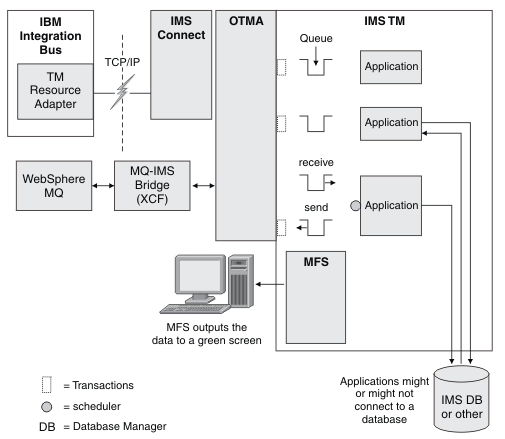IBM Information Management System (IMS)
IMS is a message-based transaction manager and hierarchical-database manager for z/OS®. External applications can use transactions to interact with applications that run inside IMS.
In addition to these components, IMS Connect manages communications for IMS, connecting one or more clients with one or more IMS systems. IMS Connect also handles workload balancing, and supports the IBM® supplied client, the IMS TM resource adapter.

- The WebSphere® MQ-IMS bridge
The WebSphere MQ-IMS bridge is a component of WebSphere MQ for z/OS. You can use it to access applications on your IMS system from WebSphere MQ applications. For more information about the WebSphere MQ-IMS bridge, see WebSphere MQ Version 7.5 product documentation online.
- The IMS SOAP Gateway
The IMS SOAP Gateway is a web service solution that integrates IMS assets in a Service-Oriented Architecture (SOA) environment. For more information, see IMS SOAP Gateway web page.
For more details about how IMS works with IBM Integration Bus, see IMS nodes.
For further information about IMS and its components, see the IBM Information Management Software Library web page, which contains links to the IMS information center and associated IBM Redbooks® publications.